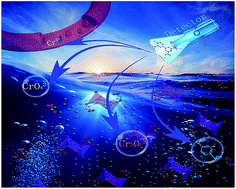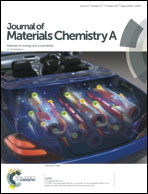An ultrastable zinc(ii)–organic framework as a recyclable multi-responsive luminescent sensor for Cr(iii), Cr(vi) and 4-nitrophenol in the aqueous phase with high selectivity and sensitivity†
Abstract
A 2D zinc(II) metal–organic framework (Zn-MOF-1) formulated as [Zn(L)(H2O)]·H2O (1) (H2L = 5-(2-methylpyridin-4-yl)isophthalic acid) with blue fluorescence has been successfully obtained under hydrothermal conditions. Zn-MOF-1 contains microporous parallelogram channels with accessible Lewis-base sites, coordinated water molecules and uncoordinated carboxylates, which are easy to anchor and recognise various analytes. The fluorescence investigations demonstrated that the blue-light-emitting behaviour of Zn-MOF-1 possesses excellent water and pH stability. More importantly, this is the first reported recyclable multi-responsive Zn-MOF fluorescence sensor for Cr(III), Cr(VI) (CrO42−/Cr2O72− ions) and 4-NP (4-nitrophenol) simultaneously with high selectivity and sensitivity and low detection limits in aqueous solution through fluorescence quenching. Furthermore, the mechanism for the selective sensing of Cr3+, CrO42−, Cr2O72− or 4-NP can mainly be explained by the competition between the absorption of the analytes and the excitation/emission of Zn-MOF-1, and the electronic interactions between Zn-MOF-1 and the analytes.



 Please wait while we load your content...
Please wait while we load your content...